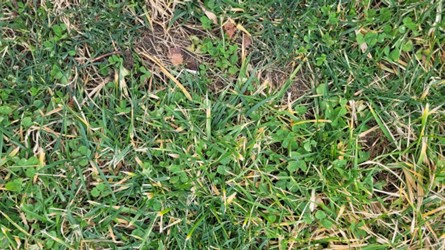
A vibrant, healthy lawn doesn’t start at the surface, it begins beneath the soil. Proper soil care is essential for strong roots, resilient grass, and a lush, green yard. One of the most effective ways to support your lawn is professional aeration, which loosens compacted soil and allows water, nutrients, and oxygen to reach the root system. By implementing smart soil care practices, you can encourage deep root growth, improve nutrient absorption, and create a lawn that can withstand stress from drought, pests, and foot traffic.
Understanding Your Soil
Before you can improve your lawn, it’s important to understand the type of soil you have. Soil can generally be classified into three main types: sandy, clay, and loam.
- Sandy soils drain quickly but struggle to retain nutrients and moisture.
- Clay soils hold water and nutrients well but are prone to compaction, which limits root growth.
- Loam soils offer a balanced mix of sand, silt, and clay and are ideal for most grass types.
A soil test is a simple yet valuable step that can identify nutrient deficiencies, pH imbalances, and texture concerns. Testing allows you to tailor your care practices, ensuring that your lawn receives the nutrients it needs to thrive.
Nutrient Management
Grass requires essential nutrients, primarily nitrogen, phosphorus, and potassium, to grow strong and healthy. Fertilizing correctly is crucial for maintaining soil fertility and encouraging vibrant turf.
- Nitrogen promotes leafy, green growth.
- Phosphorus supports root development and establishment.
- Potassium strengthens stress resistance and overall plant health.
Applying the right fertilizer at the appropriate time of year ensures that nutrients are available when grass is actively growing. Slow-release fertilizers are especially beneficial because they provide a steady supply of nutrients, reducing the risk of burn and promoting long-term health.
Organic Matter and Compost
Incorporating organic matter into your soil is one of the most effective ways to improve its structure and fertility. Compost enriches the soil, increases moisture retention, and encourages beneficial microbial activity.
Top-dressing your lawn with a thin layer of compost can help break up compacted areas, create a nutrient-rich environment, and support healthy root growth. Over time, this practice can significantly enhance the resilience and density of your grass.
Water Management
Even nutrient-rich soil won’t produce healthy grass without proper water management. Grass roots need deep, consistent moisture to grow strong, yet overwatering can lead to shallow roots and increase susceptibility to disease.
- Deep, infrequent watering encourages roots to grow downward, making the lawn more drought-resistant.
- Watering in the early morning reduces evaporation and limits the risk of fungal issues.
Pairing proper watering techniques with soil care practices ensures that nutrients are efficiently absorbed and that the lawn remains healthy through seasonal stressors.
Reducing Soil Compaction
Soil compaction restricts root growth, limits oxygen, and reduces nutrient absorption. While mechanical solutions are common, other methods can also help maintain loose, healthy soil.
- Light tilling in bare spots or seedbeds can loosen soil for better root penetration.
- Adding organic matter helps improve soil texture over time.
- Reducing heavy foot traffic or moving equipment regularly prevents compaction in high-use areas.
Healthy, uncompacted soil supports deeper roots, denser grass, and better overall lawn performance.
Managing Thatch
Thatch is a layer of dead grass, roots, and organic material that can build up on the soil surface. While a thin layer of thatch can protect roots, excessive accumulation prevents water and nutrients from reaching the soil.
Regular dethatching or raking removes excess debris, allowing moisture and nutrients to penetrate the root zone. This simple practice complements other soil care techniques, ensuring that grass receives the resources it needs to thrive.

Microbial Life and Soil Health
A healthy lawn isn’t just about grass, it’s also about the microbial ecosystem within the soil. Beneficial bacteria, fungi, and other microorganisms break down organic matter, release nutrients, and improve soil structure.
Adding compost, mulching clippings, or using bio-stimulants can support microbial activity. Encouraging a thriving soil ecosystem enhances nutrient availability, strengthens roots, and helps grass withstand stress from environmental pressures.
Seasonal Maintenance
Soil care should adapt to seasonal changes. In spring, focus on loosening soil and adding nutrients to support early growth. During summer, manage water efficiently and monitor for compaction or heat stress. In the fall, overseeding and applying organic amendments prepare the lawn for winter dormancy and encourage strong root development for the next growing season.
Attentive Soil Care
Thick, vibrant grass doesn’t happen by chance, it starts with attentive soil care. By understanding your soil type, managing nutrients, adding organic matter, controlling water, reducing compaction, managing thatch, and supporting microbial life, you create an environment where roots can thrive and grass can flourish.
Healthy soil is the foundation of a resilient, green lawn. With consistent care and attention to these practices, homeowners can enjoy a lush, durable lawn that looks great and stands up to the challenges of weather, pests, and heavy use. Investing in soil health is an investment in the long-term beauty and vitality of your yard.